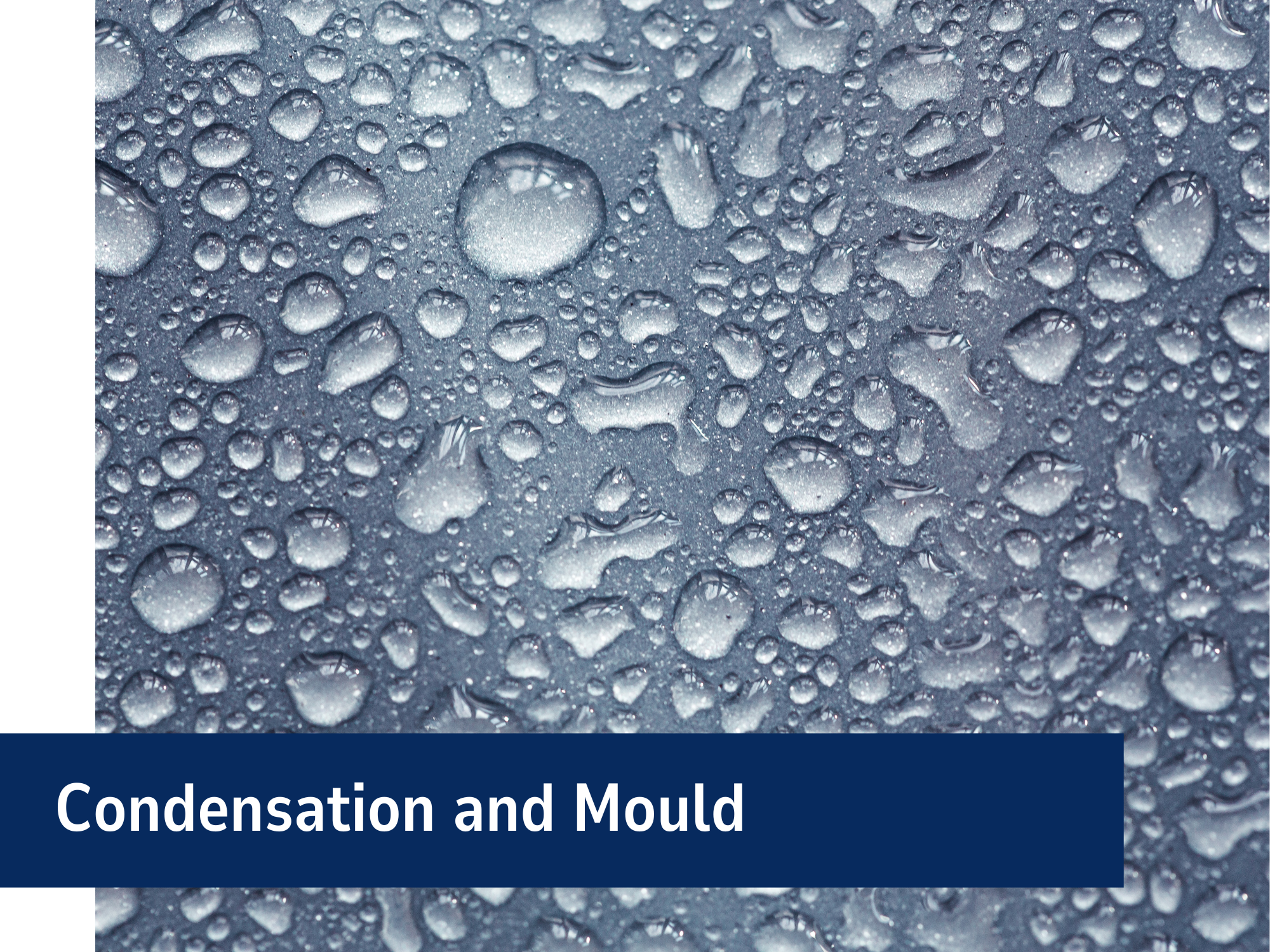We want all our customers to have a safe and comfortable home. Damp and condensation can appear in any home. It is caused by condensation or a building fault such as leaks in pipework, penetrating damp and rising damp.
We encourage all customers who are having problems with mould or damp in their home to report it to us. Our Damp Inspection Team can investigate the issue through a full property survey and put steps in place to deal with it. A letter containing the results of the survey and details of any works required will be sent to you following the survey.
Our Condensation and Mould leaflet provides a range of information about preventing and dealing with Condensation and Mould.
What is Condensation?
Condensation occurs when moist air comes into contact with colder surfaces such as walls, windows, or toilet cisterns. The air cannot hold the moisture and tiny drops of water appear on surfaces. It can also occur in places where the air is still, such as the corners of rooms, behind furniture or inside wardrobes.
Wipe down any affected walls, ceilings and window frames using an Health and Safety Executive approved fungicidal wash - do not use household bleach as this will not solve the problem and is not recommended by health and safety experts.
How can I prevent Condensation from forming?
- When cooking – always cover boiling pans, open the window, close the interior kitchen door and use an extractor fan (if fitted)
- When bathing – Keep the bathroom door closed, open the bathroom window and use an extractor fan (if fitted). When filling a bath, run the cold tap first and then add hot water – this will significantly reduce the amount of steam produced
- When washing/drying clothes – dry clothes outside where possible but if drying clothes inside is unavoidable, use an airer in a warm and well-ventilated room with the internal door closed. Do not put wet clothes directly on a radiator as this causes excess moisture in the air. If a tumble dryer is used, it must be ventilated directly to the outside air
- Heating – as the weather turns colder, most homes will experience condensation. Keeping your home heated at between 18-21 degrees is the most efficient way to keep rooms warm enough to avoid condensation. This is very important in flats, bungalows and homes where bedrooms are not above a warm living room
- Improve Ventilation – all homes need some ventilation. This will create air changes and help to reduce condensation by removing moist air from the home and replacing it with drier air. This can be achieved by:
- Not blocking airbricks or air vents
- Keeping trickle vents open in window frames
- Opening windows, even if only slightly and on the security setting
- Open windows wider during cooking, washing, drying clothes, bathing, etc
- Ventilate cupboards and wardrobes, possibly by drilling breather holes into the false backs and do not overfill them as it restricts air circulation
- Avoid putting furniture such as beds, wardrobes and sofas against external walls as this stops air circulation.
Please note: this form is only monitored during office hours.
Please call us on 08000 121 621 after 4pm to report health and safety such as damp & mould, asbestos, collisions, accidents such as falls, fires, burns etc, as it is essential that we deal with these enquiries promptly.
Keeping Your Home Free From Condensation And Mould
PDF | 7886Kb




